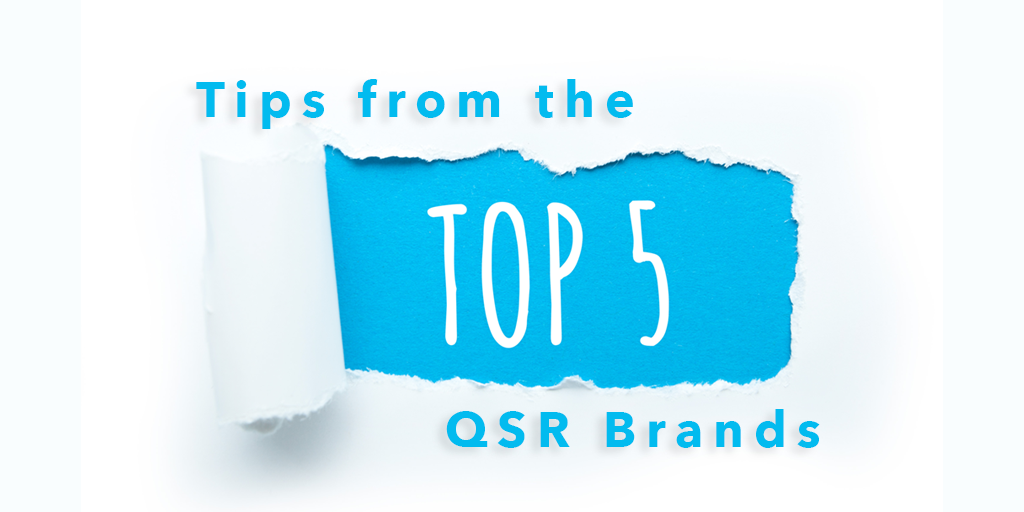Once upon a time, Tara Lindstrom could not imagine becoming a franchisee. In fact, she once swore it off: “I knew what hard work it was and how much it took to be successful,” she says.
Perhaps we’d all feel that way if we grew up in the restaurant business. Tara’s father, an immigrant from England, built a career in Carl’s Jr. corporate and bought his first restaurant when Tara was eleven. She saw first-hand what it took to succeed, and she told her parents she would never own a restaurant. To carve—and ensure—a new path for herself, Tara earned a marketing degree.
After she got married, however, Tara and her husband realized they wanted to own their own business, with all the joys and challenges that entails. So they stepped in to help operate her family’s company.
Ultimately, they expanded that passion into running multiple franchises for different brands across state lines. Tara and her husband now own and operate Jamba and Pieology franchises in addition to Carl’s Jr. So we chatted with her to find out her advice for how to best run and operate QSR franchises across multiple brands.
Figure Out Your Real Numbers First
The experience of running your first franchise is of course invaluable to running a second. But because you’re taking on a different brand, the way you calculate profit and loss will also be different—so it’s essential to talk to your peers within that franchise to understand how they figure their numbers.
When Tara branched out from Carl’s Jr. to take on a Jamba franchise, she drew on that past experience to do her own assessment of the accounting for each location and identify areas for potential improvement. She also had access to the information the franchisor provides prospective franchisees—but she advises against relying on those numbers to make your business decisions.
“Many times, franchisors will try to sell you on how much money you’ll make,” she says. “After running a few brands, you learn not just take what corporate tells you at face value. It’s important to talk to other franchisees to see what your real numbers will likely be—particularly if you can talk to people who have been in business for a while and own other brands.”
Tara also points to other costs and benefits that enter her calculations—more personalized ones that no franchise owner can provide for her.
“When we added Jamba,” she says, “We evaluated the proximity to where we lived and where we traveled already and the upsides and downsides of taking over established corporate stores. The hardest part of expanding to Utah with a new brand was not living right next to our stores. So it took a lot of travel, trips, and investment in the market to help turn those stores around.”
Diversify Your Offerings and Locations
Tara first decided to diversify after running a successful franchise for more than two decades—and that meant more than taking on a different brand. “Diversifying both in location and in your type of food, you are always prepared should shifts happen in the industry,” she says.
She believes that all businesses, especially restaurants, have a life cycle. Diversifying hedges against the inevitable downturn. When burgers take a dive, she still has juice and pizza that can buoy her portfolio. And if you’re in a business that is older or that is starting to see sales die down, then Tara thinks investing in an additional direction is a particularly good idea.
Plus, she recommends going for a reputable brand over a newcomer still going through growing pains.
“Finding another established brand that serves a different market and deals with different supply chains is a great way to make sure you are covered regardless of what happens in the business,” Tara says. “For instance, during Covid shutdowns, it was very lucrative to have stores that were capable of takeout and drive-through instead of just sit-down.”
Beyond diversifying the brands and offerings under your umbrella, Tara touts the importance of location. This can mean opening your doors in multiple states, like she does—but it also means paying attention to location on a micro level.
“I can’t stress this enough: You need the right access, sign visibility, and traffic flow,” she says. “Without those, your store will not perform.”
Specialize in Hiring, and Keep Hiring to Find the Right Fits
The hard part about diversifying is that you’re in essence running multiple distinct companies. You have to stay up-to-date on product launches, changes to operations, and communication from corporate. Internally, you maintain separate books. It’s hard work keeping track of more than one brand.
So Tara invests in an operator for each brand who can truly be a brand champion. “You need someone who is always looking out for that brand,” she says. “Someone who is active within the brand’s franchise group, conferences, communications, and webinars.”
These brand operators function on a big-picture level, so finding the right fit is wildly beneficial. Staffing each location is its own challenge, and although QSR positions are stereotypically fast turnover, that doesn’t mean they’re any less essential—and Tara understands that turnover rate as part of the process of finding the right people for these roles, too.
“Whenever you build a restaurant or take over an existing one, you will usually go through your entire team a few times before you find the right fit,” she says. “That means constant hiring.”
Hiring taxes your resources so heavily, and finding great employees is so rewarding, that Tara has felt the temptation that many multi-brand franchisees feel—that temptation to maximize the overlap in staffing between operations, particularly with management. But, she has learned that specialization works better in the end. Knowledge and skills don’t always transfer between brands like you expect them to.
“For our stores within the same area, we thought we could have more crossover with staff,” she admits. “But it's hard enough to staff each location. So burdening the managers or the district managers with trying to help out in the other brands did not work.”
What has helped her build and maintain strong teams, though? Treating them well.
“Invest in your team, in wages, in training, and in perks,” Tara says. “Without your employees, you will not be successful.”
Think Locally, Even with a National Brand
Successful franchises, almost by definition, have strong brand recognition either nationally or regionally. But success within a single location hangs on so much more than the name above the door.
Tara offers these tips for making an individual location thrive within the framework offered by the corporate brand:
- Be prepared to do it yourself. “Don’t assume that someone at corporate is taking care of something,” she says. “Brands always think they have it together, but especially in food service businesses, there’s a lot of turnover at the corporate level as well. There are always pieces that go wrong—equipment or menu boards or posters not coming in on time, or sometimes not even being able to get product if you're outside a main market. So if it affects you, just take care of it yourself.”
- Invest in local marketing. “No matter what corporate’s marketing budget is, it is not geared toward your locations specifically,” Tara says. So take charge of your own local advertising and sponsorship opportunities, which you can tailor to your own community.
- Customize. Every area of the country is different. Even locations across town can experience different scenarios. So don't assume that something that works in one location will work in another. “Do your due diligence with local research into the market and your competitors,” Tara recommends, “and in general just know what people in an area expect with both products and pricing.”
Final Thought: Have Fun and Keep Learning
Ultimately, remember what got you into running franchises in the first place—especially the aspects you enjoy the most—and keep alive that drive to learn and improve continuously.
“It’s fun to be involved with more than one brand,” Tara says. “You get to see more of the marketscape of the food service industry, and you get to take what you learned with one brand and apply it to another. Many restaurant franchisees own multiple brands, so there is a lot of learning and knowledge to tap into between franchises.”



